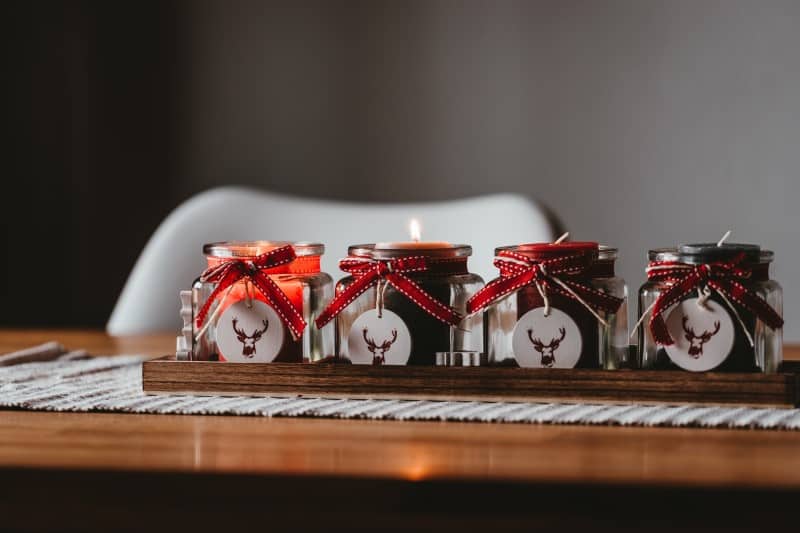Do you have a stubborn homemade candle that just won’t burn or just stay lit? We know you poured your heart into the candle making process. Fortunately, but unfortunately, this happens way more often than you think for a couple of reasons.
Faulty wicks are the biggest causes of homemade candles, not burning. It might be too short that it can’t burn over the melted wax, or your wick ended up in a tunnel, and now there’s no oxygen accessible to it. You could also have lit your wick the wrong way.
If you are starting your candle making journey at home, a candle that won’t burn can be frustrating. Read on to unlearn some mistakes that probably led to your candle not burning.

You Are Working With a Flooded Wick
Flooding the wick means that the candle’s flame is surrounded by too much-melted wax for it to vaporize in before being overtaken by the wax pool.
If the wax flooding is severe, the flame will be completely flooded, and the candle won’t burn at all. In less severe cases, the issue could be that the wick is too small, making the flame is too low to burn all the excess wax off.
The most probable cause of this is that you trimmed your wick too low.
The reason why you are supposed to trim the wick after making your candle is so that you can prevent smoke and reduce soot accumulation. However, trimming that wick too low could lead to flooding and a candle that won’t burn.
How to Correctly Trim That Wick
Having said the burning trouble could be from having a wick that is too short, it is essential to grasp the right wick size concept, since an overly long wick will also be problematic.
Before you light that candle for the first time, inspect the height of the wick you have. If the wick is over a quarter an inch, trim it and bring it down to this length. If your candle is longer, the flame will be flickery; hence, create too much smoke and soot.
If, on the other hand, the wick is too short, it will lack the capacity to burn enough wax. So you need to make some adjustments to your candle in either situation.
To remove the excess liquid wax flooding your wick, you can try the cotton ball method. Pick an absorbent cotton ball and use it to soak up the excess wax.
Read more about Why Should You Trim Your Candle Wicks?
Tunneling
If your candle did not get enough time to create a full melt pull during the first burn, then it will form up a little depression called a tunnel right around your wick. In turn, the tunnel makes it harder for the wax that’s around the jar’s edges to melt.
Therefore, the tunneling effect continues to grow deeper with each burn.
Eventually, the tunnel ends up too deep for any fresh oxygen to flow in. The candle will, in turn, have trouble burning at all. If it does, it will only stay lit for short periods.
Read our full article on Candle Tunneling.
The Remedy to Tunneling
Do not disrupt your candle during the first burn. This burn is important since it allows it to develop a melted pool around your container’s edges. This stage could even take up hours, depending on the wick and size of the container.
Weird, but your candle jars have some sort of ‘wax-memory,’ So, once it establishes a burning pattern, it will be hard to change. If you start the burning with a tunnel, it will tunnel until it cannot burn anymore, so make sure you allow the first burn to be even.
You Are Lighting Your Wooden Wick at the Wrong Angle
If you used a wood wick for your homemade candle, lighting up that wick is slightly different from the other wicks. There are high chances are that it will take you several tries before it starts burning. So do not panic.
For the wooden wicks, the heat from the wick will need to draw some wax through it before it starts to burn smoothly. Give it a try after another; the lighting and burning will get easier as you continue.
How to Light a Wooden Wick Like a Pro
The best technique when you are burning a wooden wick is tilting it at an angle. By doing this, you allow the flame to smoothly draw across the wick’s length – its a lot like how you would tilt a matchstick after lighting it.
Wooden wicks are eco-friendly, so do not shy away from buying wooden wicks due to the slight technicality of how to light them.
The Wood Wick Is Too Long
Other than the flooding problem, your candle won’t burn or light if that wick is too long. This problem is specific to you if you are using a wooden wick. It will also not burn if it requires a trim to clean the charred material off.
Always remember that the wood is not responsible for fueling the candle’s flame; the wax is. The flame draws the wack upwards through its wick. Therefore, if this wick is not trimmed well and kept short enough, the wax just won’t make it to the flame.
How to Maintain a Proper Trim for the Wooden Wicks
To trim your wood wick, a set of cutters or nail clippers will do the trick. You can also pinch and use your fingers plus a napkin to just break off the parts of the wick that are burnt.
Pro tip: Make sure you first let your candle cool every time you want to do a trim. This will prevent bits of wick material or ash being left inside the melted wax after you trim. Its a lot easier to clean up the wax when it is hard and cold.
You Are Using the Wrong Size of a Wick
If you put a small wick in a candle size that requires a bigger one, the probability is that your wick won’t light for long, and your candle will not burn. This is because the flame ends up burning the wick too fast.
A wick lacking enough body will not manage to feed its flame with all the surrounding wax. Such a wick will grow smaller and smaller, eventually, sink away into the liquid wax. It could potentially end up in a tunnel if it manages to burn longer.
Consider your intended candle size, then shop for candle wicks with this in mind instead of buying the wicks first.
The Co-Relation Between Wicks and Burning
Wicks are not equal; they all come with different levels of thickness. Depending on your type of wax and candle size, your wick will need to be a specific diameter of your candle. Whatever you do, make sure that you match the wick size to the colorant.
Your Wick Is Everything in Homemade Candles
It’s easy to get sucked into the satisfying process of trying candle scents in the making process. The wax melting and cooling processes are also quite intriguing. The factors often make it easy for many to brush through the wick-placing part of the process.
Placing the wick does look like icing on the cake, and just a last easy step. It is, but brushing through it from what we have learned can frustrate you after a wonderful candle making process.
Ensure that your wick is the right length, take time to consider which material and type of wick you would like to use. Additionally, find out what proportion and size of the wick to use with the size of the candle you are making. Finally, give that first burn the time and patience it needs.
Before you go back to exploring your creativity again, remember that candle making requires patience. Not just patience with the cooling of the wax, but patience with yourself too. Try again and again until you get that homemade candle burning.
If it really doesn’t work out for you, you can always opt for a candle warmer.
Read more:
